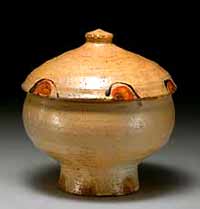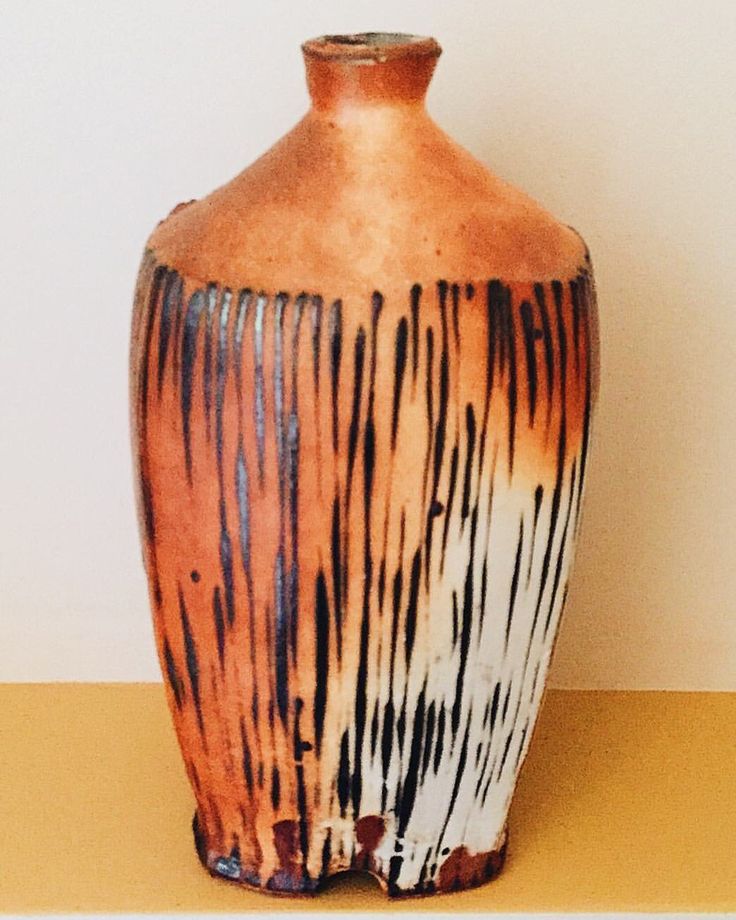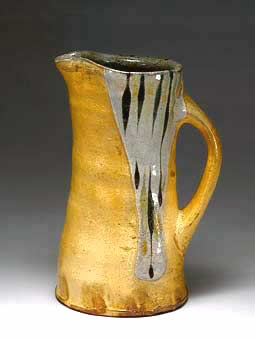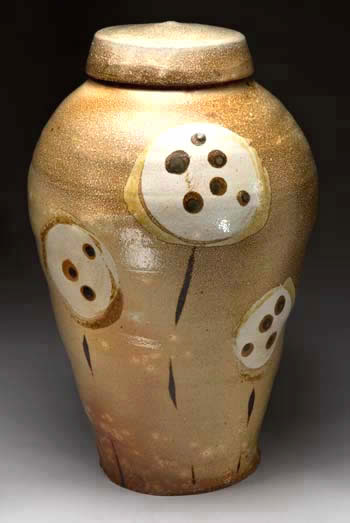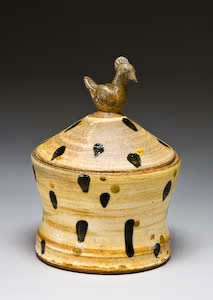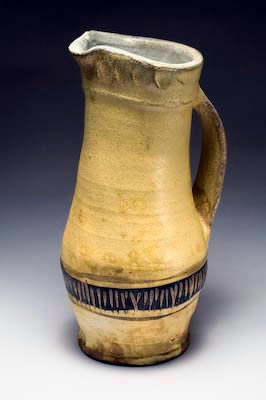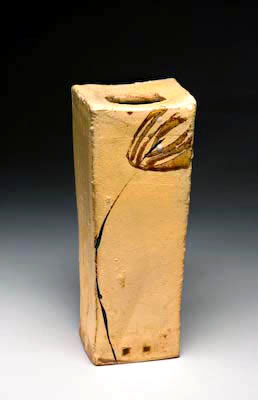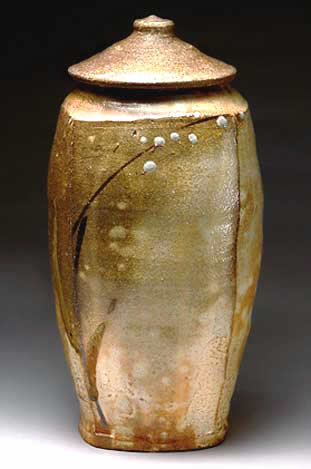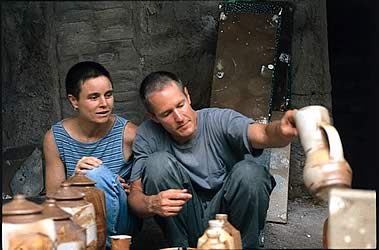Douglass Rankin, American B:1948 &
Will ruggles, American B:1956
Teapot • Clay 5-1/2" x 9" x 6-1/2"
Douglass was a common name for girls in Shakespeare’s day. No so much in the age of Aquarius. Douglass Rankin and Will Ruggles followed few traditional paths. Their lives became a series of threads woven together to form “… a pretty good life.” How they got there is a pretty good story.
Randy Johnston’s Wisconsin studio was just the beginning for Douglass and Will. Both cared deeply about relationships that tied the world together. Douglass studied botany at Duke then left for a series of “Lets-Try-This” endeavors until “I thought, ‘what is it I really like, after all?’ The answer was clay.” Her one pottery class at Duke provided an earthen bridge to the Randy Johnston’s pottery.
Will Ruggles, eight years younger than Douglass, walked a straighter path to Johnston’s studio. Raised in Elkhart, Indiana, he studied pottery at Grand Valley State College in Michigan. He left to pursue a growing interest in ancient Asian pottery and found Zen Buddhism in the process. His search took him to Taiwan and Thailand, then to Wisconsin to apprentice with Johnston.
(story continues below break)
INTERESTING STORIES FROM OUR SPONSORS
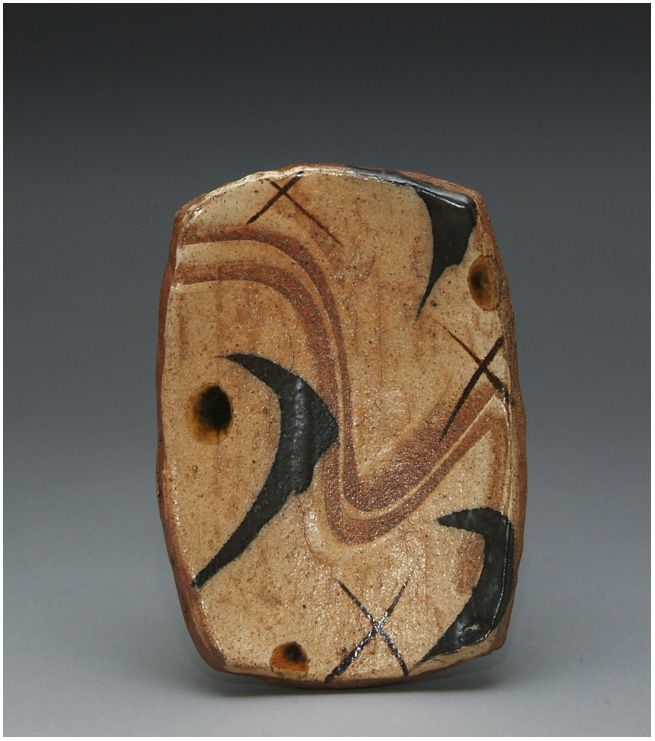
In River Falls, Wisconsin two separate threads became one. The botanist, turned potter and the Zen Buddhist student started a lifelong search for the Zen of making pots. “The best pots come out of the interaction between maker, materials and process. “When transforming raw clay to finished pots, respecting and loving each component … strengthens the pot with honesty, while tempering the imposition of too much ‘me.’”
Zen teaches all things are interdependent and interwoven. This became the organizing principle of their life. In a mountainside pottery outside Bakersville, North Carolina, they threw pots in an old horse shed, fired them in a kiln of their own design, and sold them in a scenic barn on their property. The whole operation was animated by a water-powered electric-generating system built along the creek behind their home. If it sounds like the “Little-Pottery-That-Time-Forgot,” it was. And, yet, their simple Rock Creek Pottery became a pilgrimage site for potters throughout the region and beyond.
“We take a material formed millions of years ago and make something we can drink tea out of or use to serve salad we have grown in our garden. This is a very primal process that we find extremely nourishing.”
It appears, Rankin and Ruggles found happiness in the uncommonly common.
Canton Museum of Art Permanent Collection • Gift of John and Jane Reeves, 2002.1
4 Ways to Sound Smart When Viewing at The Canton Museum of Art
1.
“These Zen Buddhist potters so believed in the interdependency of everything that they considered their kilns and salt-fired process creative partners. But, they only split the profits from their Rock Creek Pottery two ways.”
2.
“Their simple Rock Creek Pottery in the North Carolina mountains was a remarkably self-sufficient place with a water-powered electric generating system driven by the creek behind their home.”
3.
“They gave special attention to the way their ceramic pieces interacted with users. For example, they paid attention to how a persons lips touched the rim of a cup.”
4.
“They met while both were apprentices at Randy Johnston’s River Falls, Wisconsin studio. Johnston shared their love of ancient asian pottery.”
Rankin & Ruggles Timeline. Scroll over images to see timeline.

